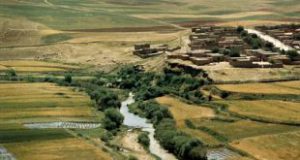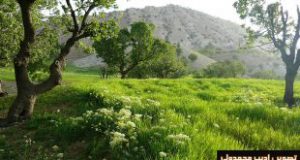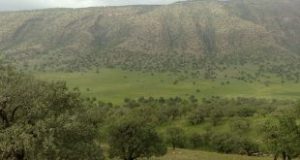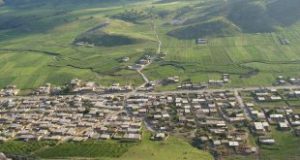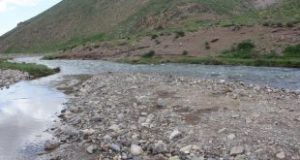Carpet weaving
Carpet weaving with pure wool is popular in villages of Bushehr such as Shul and Deh Kohneh, Tang Eram and also villages around Poshtkuh.
Gabbeh weaving
Gabbeh is a kind of carpet and considered as the most prominent handicraft of Bushehr. Gabbeh weaving is popular in almost all villages and cities of the province. Gabbeh weavers do not use map for weaving they weave by conceptual designs in their minds. The common design among Gabbehs of this district is the tradition which had been made through thousands of years. Gabbeh designs are actually geometric patterns, bird, animal, and flowers paintings, striped patterns, or one to three Bergamot orange in its every corner.
Sometimes its central design divided into squares or paisley, like every traditional design. Bushehr Gabbeh is mostly 200 centimeters long and 100 centimeters wide. For each carpet, two weavers work 6 hours a day for a month. Gabbeh is usually weaved by colored wool and mohair.
Kilim weaving
Kilim weaving is more popular in Kangan County. Although its production is low, it is an important artistic handicraft of the province. It is weaved by mohair, which is stronger than others, and wool. They are 110×400 centimeters.
Felting
Felt is the most traditional handicraft of Bushehr Province. Barazjan was popular in felt production once and has lots of workshops. Felt is so popular among Nomads because it is light and absorbent. Nowadays felting is popular only in some desert villages which has lots of camels.
Mat Weaving
Mat is made by Palm stem and is popular in most of Bushehr cities which have palm trees. Mat is an important product of the province because of its economic benefits. It also had an economic boom in Persian Gulf Emirate Bazaar. There is a Mat Carpet named Tak with 10 centimeters wide and 30 meter long then it cut into pieces and is being woven together. Another kind of Mat Carpet is like Kilim which is made by a wheat stem. This carpet is 6 meters long and 75 meters wide which are cut by half at the end of weaving then the pieces weaved together again. It is something about a 3×1/5 meter long and wide carpet.
Suzani
In most villages of Kangan County Suzani is popular. It is used for embroidery on teapot, sugar bowl cloth and cushion and on bigger things like backrest, table cloth, or curtain. Besides Suzani, Applique is also popular. Suzani cloth is usually Calico and its yarn is colorful Demseh.
Espadrille making
It is the old handicraft of Barazjan village and used in warm weather.
Basket and hamper weaving
Both of them had been woven by palm stem and is used so much.
Broom making
It had been woven by palm stem and is used for washing.
Pottery making
Due to the importance of water in this district, making the equipment that keeps water cool is so popular from ancient times. This work of art is most popular in Kangan Port beside Ahrom and Barazjan. The pottery production is mostly urn, hookah, jar and etc.
Hookah (Chalim)
There is a special hookah in Bushehr Province which is made from pottery and its water is not seen. The most interesting point about this hookah is that none of its parts do match each other and should be held by hand. It is also called Chalim. This hookah is one of Bushehr Province handicrafts.
Musk
It is made from the animal’s skin and used as water storage.
Dulcheh
It is made of animal’s skin in a cone shape which has three wooden bases which are used for keep water cool. It is most popular in Barazjan.
Dhow and Shipbuilding
Dhow and shipbuilding are among the oldest handicrafts of Bushehr Provinces. Its history related to the Afsharid Dynasty. The industry of shipbuilding has boomed a lot because of sea exchanges and fishing boom.
It is mostly done in Galafan. Its necessary equipment is hardwoods for the waterfront, Indian wood named Say and other things. Their equipment is so primitive which is produced annual because of its slow process.
It is popular in Bushehr, Rig Port, Ganaveh Port, Shif Port and etc.
Fishing net weaving
The fishing net is one of the important equipment for fishing. Unlike the shipbuilding industry, net weaving is not popular anymore and mechanical weaving got its position.
Masqati
It is a kind of sweet which is considered as the province souvenir.
- Please feel free to call us on 00989020038045 (Phone, Whatsapp, Telegram) or contact by info@mustseeiran.com, if you require any further information.
Follow us on Instagram @mustseeiran.com_insta
